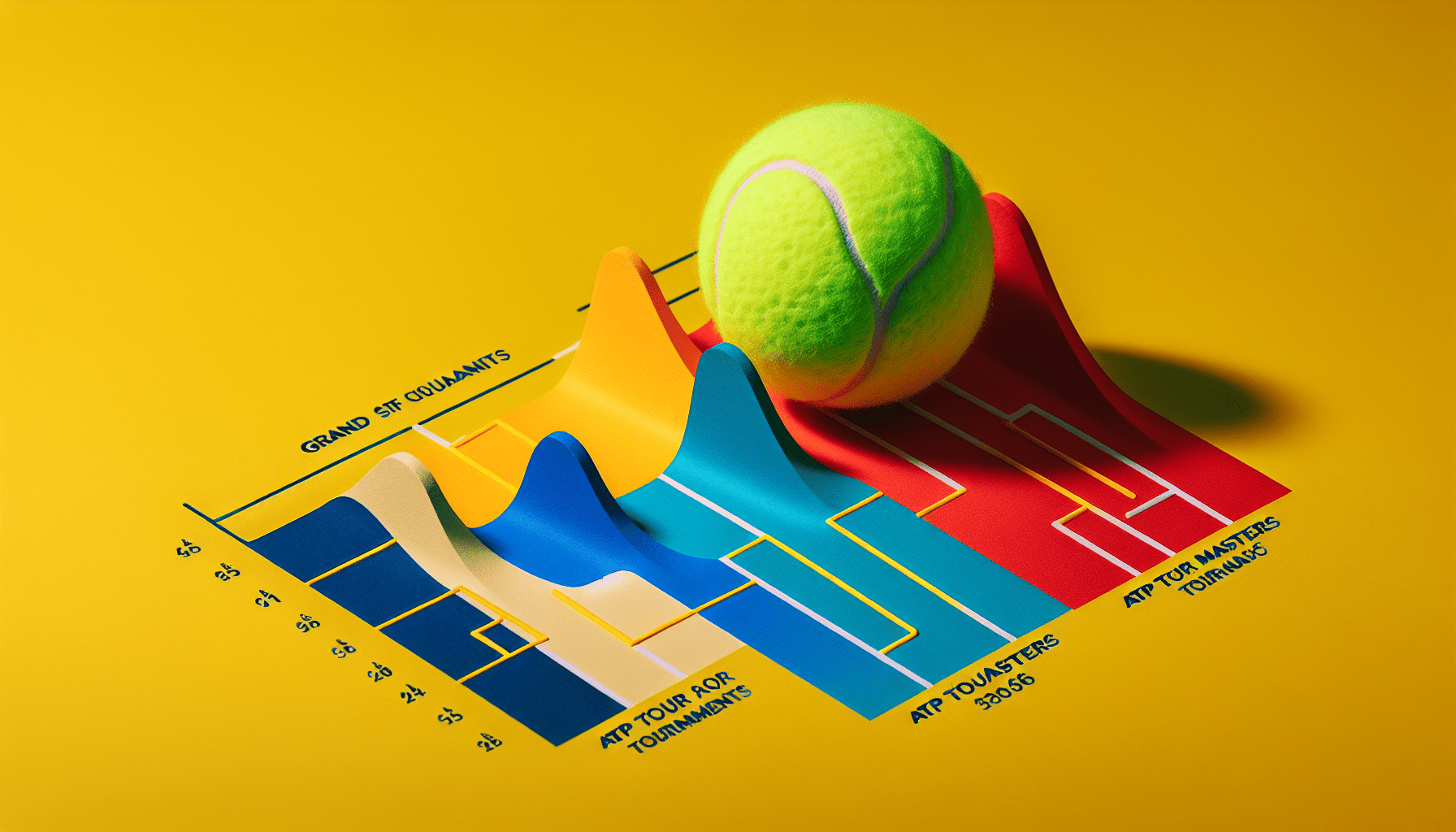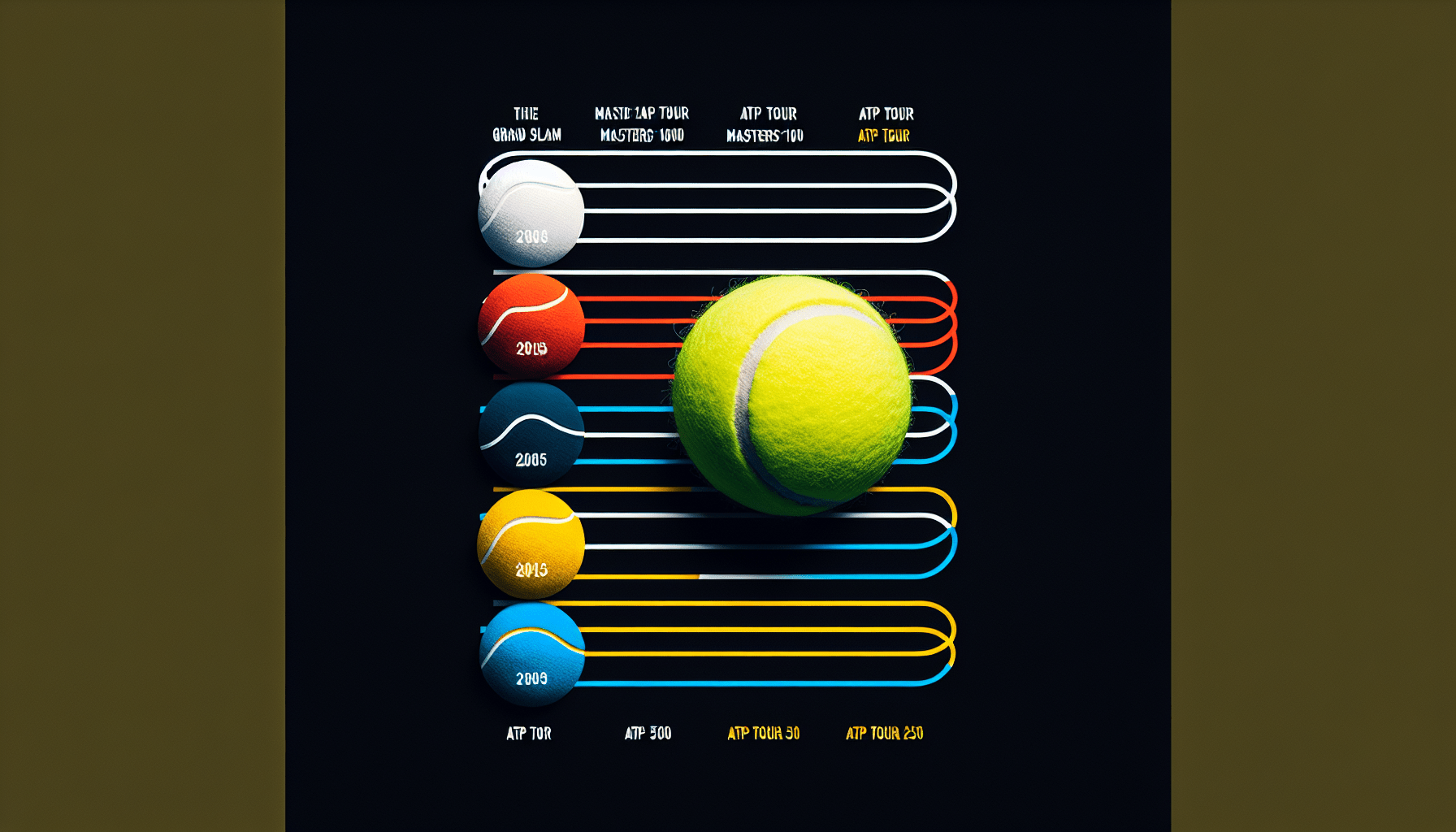What Do Tennis Tournament Levels Mean?

Understanding Tennis Tournament Levels
When it comes to tennis tournaments, there are different levels that players can compete at, ranging from local and recreational events to professional Grand Slam tournaments. Understanding the different levels of tennis tournaments is important for players looking to compete and for fans who want to follow the action. In this article, we will break down what each tournament level means and what players can expect at each level.
Levels of Tennis Tournaments
Tennis tournaments are divided into different levels based on factors such as prize money, ranking points, and the caliber of players competing. The main levels of tennis tournaments include:
-
Grand Slam Tournaments: These are the most prestigious and highly anticipated tournaments in tennis. There are four Grand Slam tournaments held each year – the Australian Open, French Open, Wimbledon, and US Open. These tournaments offer the most ranking points, prize money, and media attention. They attract the best players in the world and are watched by millions of fans worldwide.
-
ATP Tour Masters 1000: The ATP Tour Masters 1000 series is a set of nine tournaments that are just below the Grand Slam level in terms of prestige. They offer a significant amount of ranking points and prize money. These tournaments attract the top players on the ATP Tour and are highly competitive.
-
ATP Tour 500 and ATP Tour 250: These tournaments are the next levels down from the Masters 1000 series. ATP Tour 500 events offer more ranking points and prize money than ATP Tour 250 events. These tournaments feature a mix of top players and up-and-coming talent.
-
Challenger Tournaments: Challenger tournaments are a level below the ATP Tour events and are used by players to gain ranking points and experience. These tournaments are typically less lucrative in terms of prize money but are important for players looking to climb the rankings.
-
ITF World Tennis Tour: The ITF World Tennis Tour is the entry level of professional tennis. These tournaments offer valuable ranking points for players looking to advance to higher levels of competition. The prize money at these events is lower compared to ATP Tour and Grand Slam tournaments.
Differences Between Tournament Levels
Each level of tennis tournament offers a different level of competition, prize money, and ranking points. Here are some key differences between the various levels of tennis tournaments:
-
Competition: The higher the level of the tournament, the tougher the competition. Grand Slam tournaments and ATP Tour events attract the best players in the world, while Challenger and ITF tournaments feature a mix of established professionals and up-and-coming players.
-
Prize Money: The prize money at each level of tournament varies significantly. Grand Slam tournaments offer the most lucrative prize money, with winners taking home millions of dollars. Challenger and ITF events offer less prize money, but still provide players with an opportunity to earn a living through tennis.
-
Ranking Points: Ranking points are awarded based on a player’s performance in a tournament. Higher-level tournaments such as Grand Slams and ATP Tour events offer more ranking points, which can help players improve their ranking and gain entry into prestigious events.
-
Media Coverage: Grand Slam tournaments receive extensive media coverage and are watched by millions of fans around the world. ATP Tour events also receive significant media attention, while Challenger and ITF tournaments have limited coverage.
How Tournament Levels Impact Players
The level of tournament that a player competes in can have a significant impact on their career progression and earning potential. Here are some ways in which tournament levels can impact players:
-
Gaining Experience: Competing in higher-level tournaments allows players to gain valuable experience playing against top-level competition. This experience can help players improve their game and advance to higher levels of competition.
-
Earning Potential: Prize money at higher-level tournaments is significantly higher than at lower-level events. Players who compete in Grand Slam and ATP Tour events have the opportunity to earn millions of dollars in prize money, while players at the Challenger and ITF levels may struggle to make ends meet.
-
Rankings: Performing well in higher-level tournaments can help players improve their ranking and gain entry into more prestigious events. Players who compete in Grand Slams and ATP Tour events have the opportunity to earn more ranking points, which can boost their ranking and career prospects.
-
Sponsorship Opportunities: Success in higher-level tournaments can attract sponsors and endorsement deals for players. Sponsors are more likely to invest in players who compete at the highest levels of the sport and have a strong media presence.

Navigating the Tournament Levels
For players looking to compete in tennis tournaments, it is important to understand the different levels of competition and how they can impact their career. Here are some tips for navigating the tournament levels:
-
Set Realistic Goals: Players should set realistic goals based on their skill level and experience. Starting at the lower levels and working their way up can help players gain valuable experience and improve their game over time.
-
Seek Coaching: Working with a coach can help players develop their skills and create a plan for advancing through the tournament levels. Coaches can provide guidance on tournament selection, training programs, and mental preparation.
-
Build a Strong Team: Players should surround themselves with a strong support team, including coaches, trainers, and mental conditioning specialists. A strong team can help players navigate the challenges of competing at different levels of tournaments.
-
Stay Committed: Progressing through the tournament levels requires dedication, hard work, and perseverance. Players should stay committed to their goals and continue to work on improving their game, even in the face of setbacks.
Conclusion
Understanding the different levels of tennis tournaments is essential for players looking to compete at a professional level and for fans who want to follow the sport. Each level of tournament offers a unique set of challenges and opportunities for players, from the prestige of Grand Slam events to the competitive nature of Challenger tournaments. By navigating the tournament levels strategically and setting realistic goals, players can maximize their potential and advance their careers in the sport.
